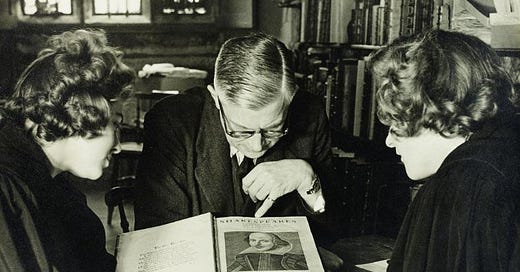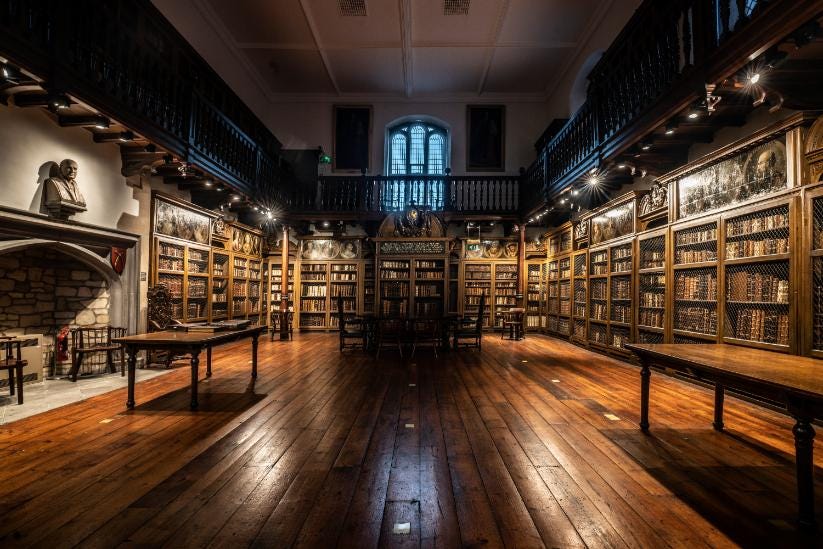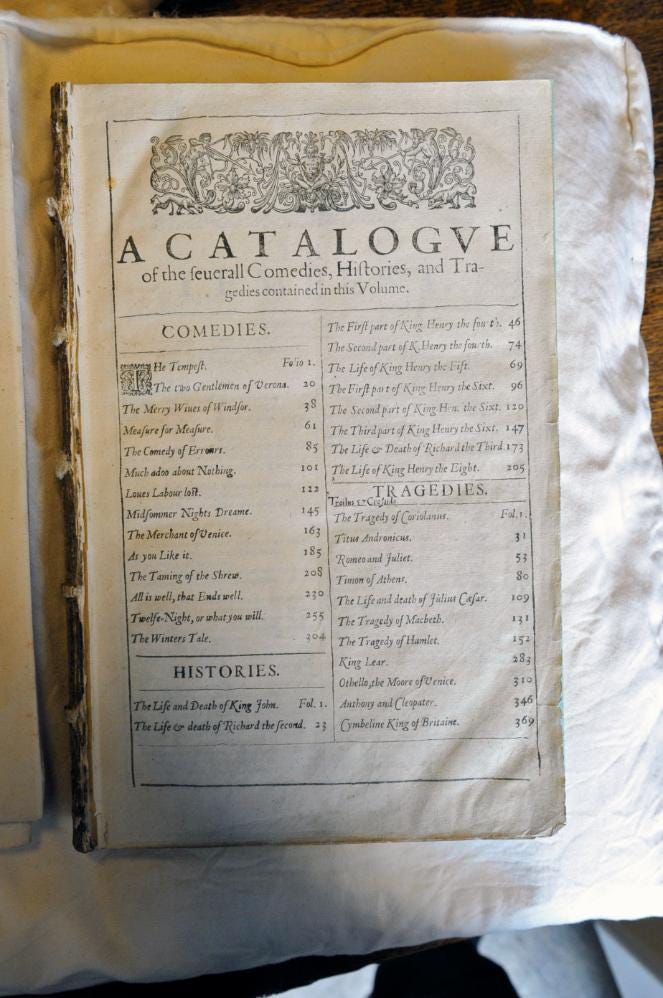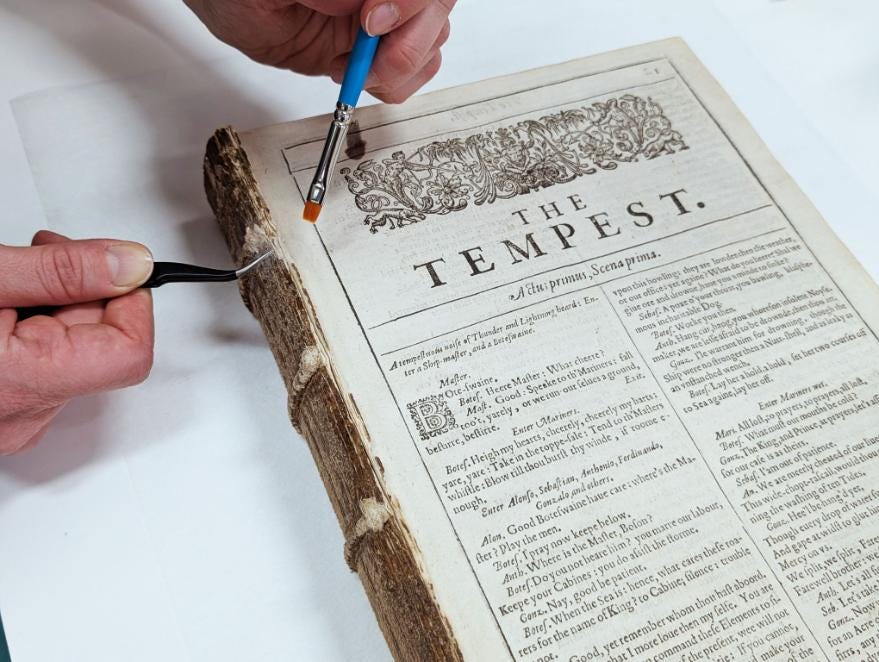Folio, folio, wherefore art thou folio?
Tony Henderson reports on a Shakesperian story of loss and recovery
In December 1998, a library rated as among Durham’s greatest treasures was the barely believable scene for an audacious theft.
The library at Palace Green, founded by Bishop John Cosin in 1669, was home to a copy of the first collected edition of Shakespeare’s plays.
The First Folio, published in 1623, was stolen along with six other texts.
Amongst the Folio’s 36 plays are 18, such as Twelfth Night, Anthony and Cleopatra, The Tempest and Macbeth, which would have been lost to history, along with their enduring influence on the English language.
For a decade, there was no news of the missing books and the university had to accept that the First Folio was lost. But, like a Shakespeare play, the story didn’t end there.
In 2008, a badly damaged book was brought to the Folger Shakespeare Library in Washington D.C.
The book was presented to experts as a newly discovered copy of the First Folio that needed authentication for sale. Staff at the Folger quickly recognised the possibility that this book was in fact Durham’s missing copy and after verification it was returned in 2010 to its rightful home on Palace Green in the city.
An individual was subsequently tried and jailed for handling stolen goods.
On Friday (April 4), Durham University’s copy of the First Folio will be on display as the centrepiece of a new Shakespeare Recovered exhibition.
The exhibition explores what happened throughout the Folio saga and how Durham’s copy continues to inspire learning and debate.
The display also chronicles conservation work to preserve the book, and the debate over whether it should be rebound.
Durham’s First Folio is the only one known to have stayed in the same personal library since it was first purchased. The other stolen texts have still not been found.
The First Folio was the outcome of a long-running project by Shakespeare’s friends and admirers to establish a fitting memorial to him.
It was the first book printed in a large format only to contain dramatic works and it emerged in a relatively new market for printed plays. Because of the cost to produce the Folio, the book was not cheap- about £150 in today’s money - and the first owners were among the wealthiest and most politically important people in society.
Stuart Hunt, director of university library and collections and university librarian, Durham University, said: “Shakespeare’s First Folio is a literary wonder of the world, but only Durham’s First Folio can tell such a unique and powerful story.
“Having been at the centre of an international theft and recovery, Durham’s First Folio is truly exceptional.
“The vandalism it sustained left the Folio extremely vulnerable. But with this comes an opportunity to closely examine an iconic object in new ways and discover more about Shakespeare’s world and legacy.
“Shakespeare Recovered returns the Folio to Cosin’s Library, its home since 1669 and the place from where it was stolen all those years ago. The exhibition celebrates everything we have been able to learn from it through expert conservation and technological advances.”
Visitors to the exhibition will see this important cultural artefact as never before.
The damage that the book sustained during its missing years means that multiple pages can be viewed side by side, allowing details to be compared and understood. It is also possible to see evidence of the original binding, giving unique insight into book production in the 1600s.
Advances in technology mean that conservators have been able to use new tools to explore the book in ways not possible when it was recovered.
Modern technologies, including spectroscopy – the precise study of colour – and infrared imaging are revealing secrets within the book, including centuries-old doodles.
Hand-made replicas of the First Folio, showing how it would have looked in the 1600s will also be on show.
Tony King, senior collections care and conservation manager, at Durham University, said: “While the vandalism of the Folio is tragic, its current condition reveals parts of the book that would otherwise be hidden.
“We’ve used cutting-edge heritage science to explore this cultural masterpiece in new ways, deepening our understanding of it.
“From the sewing threads on the spine, to newly discovered doodles from hundreds of years ago, Durham’s First Folio continues to reveal new stories and insights.”
Durham’s First Folio was originally purchased by Bishop John Cosin in the 1620s.
One of the earliest, still-surviving public libraries in the North East, the original books remain in the same purpose–made building.
Cosin had been buying books for a long time and many volumes in the library are from his personal collection. Later bishops of Durham also donated books to the library, before Bishop Van Mildert allowed Durham University to use the space from 1832.
The exhibition will run until November 2, 2025 at Palace Green Library in Durham. It will be open Wednesday to Sunday, 11am-4pm.
Tickets for Shakespeare Recovered are free but advanced booking is strongly recommended due to the limited capacity of the library space. Bookings are for a 30 minute duration.
Tickets can be booked online and are being released on a rolling seven-weekly basis.







